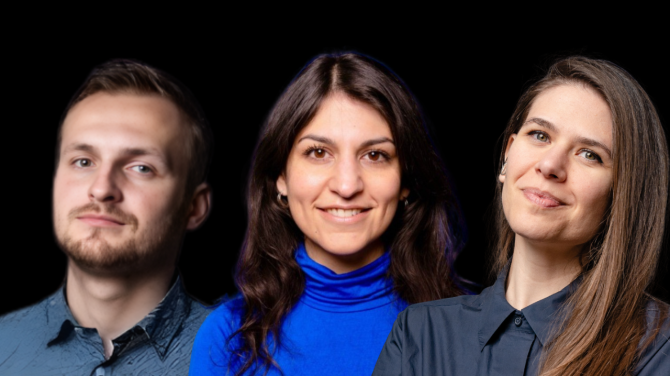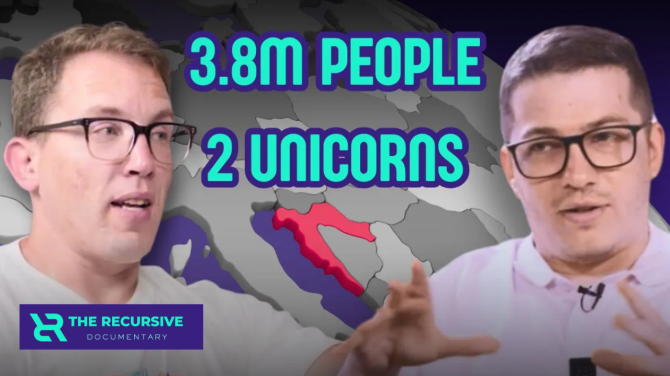The talent crisis in tech is striking. The statistics speak for themselves: within the European Union alone, the tech talent gap could be 1.4 million to 3.9 million people by 2027. In one study from Deloitte, nearly 90% of business leaders said that recruiting and retaining talent was a moderate or major challenge.
But these figures miss another, equally complicated issue: keeping the talent they’ve secured. Startup founders are bleeding their most valuable assets through a management crisis they don’t even realise is an issue, until it’s too late.
It’s often themost talented, high-impact employees who define the direction and pace of progress in startups. Yet in the same breath, these individuals are the hardest to lead and keep happy. In fact, Deloitte’s same study found that 72% ranked “meeting workers’ broader needs” as a moderate or major challenge.
It raises the question: is managing, rather than acquiring, top-tier tech talent the real issue?
The startup paradox
Startups pride themselves on attracting top-tier talent by giving them the autonomy, purpose, and chance to build something revolutionary they can’t find at larger and more established companies. These are “gold-collar” professionals – the highly specialised experts who can deliver ten times the output of the average employee.
These individuals are important as ever in 2025. Amid a golden age of deep-tech disruption, it’s a high-stake business beating other firms to the next breakthrough, whether that’s in AI, quantum computing, robotics or biotech. And with more capital being invested into these startups, there’s even less room for error, making employee retention a key competitive advantage. This is particularly true when top AI talent is being poached by tech giants like Google, Meta, and OpenAI for pay packages of up to millions of dollars annually.
The downside of these high-impact employees is that they’re often hard to keep, and even harder to manage. Many of the most impactful team members operate by a different set of rules. They may push back on hierarchy, something manageable when a startup is in its early stages, but an issue when sudden growth demands structure.
In their scramble to impose order, founders may layer on processes that alienate the same star performers they once won over with promises of minimal bureaucracy and maximum autonomy.
An exit away from collapse
The talent of these individuals can ultimately make or break a startup. The high-impact employee who has accumulated so much knowledge and plays such a pivotal role in driving the direction of a startup can leave black holes of knowledge with their departure. This could be the code only they understand or the systems only they manage.
Unlike older companies with deep benches of talent or documented processes, in some smaller startups if one key person disappears, entire projects grind to a halt. High-impact workers can as much accelerate a business’s growth as they can unravel it with their exit. Many early-stage founders don’t realise how vulnerable they are until someone like this leaves.
When this happens, the impact can be detrimental to a startup’s survival.
Ineffective leadership and management practices contribute to nearly 25% of startup failures; that’s one in four startups undone not by marketing or financial mismanagement, but by how they manage people.
So what’s the solution?
Several strategies exist for directors trying to manage and retain gold-collar talent:
First, you need to know how to spot them. These individuals aren’t always the most vocal or visible. Instead, they’re often the ones quietly solving the hardest problems, moving key projects forward, and driving progress.
Second, it’s critical to avoid mistaking bureaucracy for structure. While process has its place, excessive formalities can be fatal to engagement. Managing high-impact talent often means setting aside the standard HR playbook. Every redundant step is a signal that their time isn’t being respected. However, it is important for managers to stay very close to their gold collar employees to make sure there is continuous alignment with the company’s overall direction and objectives.
Third, let them stretch beyond their job descriptions. High-impact workers often bring strategic insight or creativity that reaches far beyond their official role. Give them the freedom to explore, contribute across functions, and challenge assumptions. Equally important is giving fast, clear feedback. These individuals move quickly and expect the same in return. Slow or vague feedback leads to frustration and may signal a lack of urgency or alignment.
Finally, be mentally prepared for their exit. While your goal is to retain them, preparing for their departure is in someways damage control. It’s essential to document critical knowledge, build redundancy into key roles, and understand exactly who on your team is irreplaceable.
Leading talent like the asset it is
In 2025, where speed, innovation, and technical breakthroughs define success, talent is the engine powering startups. High-impact professionals are critical to driving a startup’s momentum, yet are often the first to leave when founders fall back on traditional leadership habits that prioritise control, structure and hierarchy over the promises of innovation and independence that first won them over.
The key to retaining elite talent is to first offer an exceptionally interesting opportunity to engage them, then rethinking leadership altogether, and building a complementing team around these special talents. Founders must learn to let go of conventional models that prioritise order over output and embrace a new approach that empowers autonomy, respects individual working styles, and allows top performers to lead from where they are with trust and the freedom to deliver.








